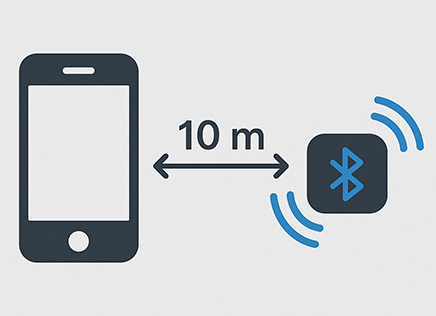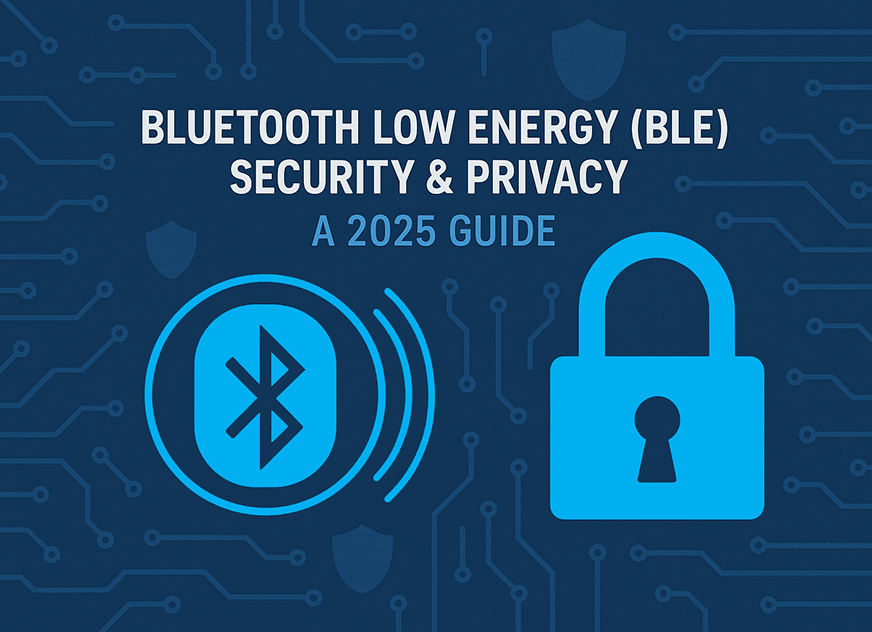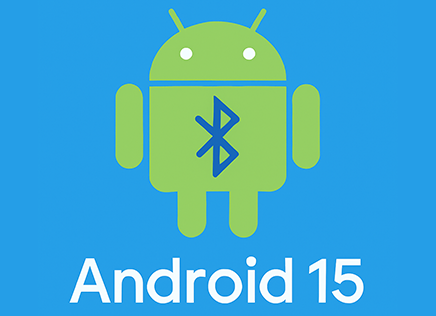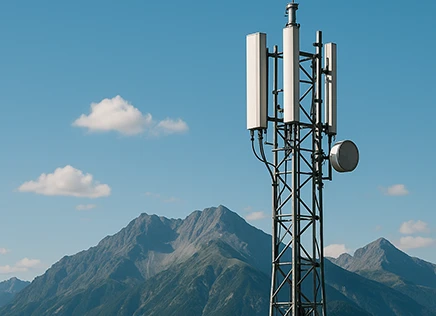
As Bluetooth continues to grow, it’s been adding more and more features. Bluetooth 5.0 introduced a new PHY, while Bluetooth 5.2 introduced LE Audio which is slowly transforming Bluetooth audio products. The latest Bluetooth 6.0 specification hopes to enable one of the most critical IoT applications – Real Time Location and Tracking.
As the numbering of the specification would imply, Bluetooth 6.0 is is a huge leap for Bluetooth. To enable location and tracking, the Bluetooth 6.0 specification most significant new Feature is called Channel Sounding. This feature helps provide distance measurement between devices that’s secure and accurate.
Here are the major changes of Bluetooth 6.0
- Bluetooth Channel Sounding – the main feature in Bluetooth 6 which allows distance measurement between devices
- Decision-Based Advertising Filtering (DBAF) – Helps you avoid scanning for packets on secondary channels
- Monitoring Advertisers – Provides the ability to monitor devices going in and out of range
- ISOAL Enhancement – Improves latency and reliability for Isochronous data frames used in audio
- LL Extended Feature Set – Enables devices to exchange a greater set of features
- Frame Space Update – Allows negotiating the Inter Frame Spacing parameter that was previously fixed to help improve throughput and reduce latency
- Core Configurations – In line with the new changes for Bluetooth Qualification, changes the way configuration of devices are stated which impacts qualification
Bluetooth Channel Sounding

Bluetooth® Channel Sounding is a new mechanism used to estimate the characteristics of the wireless communication channel between two Bluetooth devices. It was originally called High Accuracy Distance Measurement (HADM). As a key component in enabling direction finding and positioning features in Bluetooth Low Energy (LE), especially since the release of Bluetooth 5.1, which introduced the Angle of Arrival (AoA) and Angle of Departure (AoD) capabilities. The goal of channel sounding is to gather detailed information about the radio wave propagation environment to help determine spatial information like direction or location.
Bluetooth Channel Sounding is made of two different techniques: phase-based ranging (PBR) measures the phase offset of signals being sent by the two devices with high accuracy needed for sub-meter positioning.
The second method is Round-Trip Time (RTT) – this method measures the time it takes for a signal to travel from one device to another and back.
Decision-Based Advertising Filtering (DBAF)
Decision-based advertising filtering enables a scanner to decide whether to scan for packets on secondary channels depending on the contents of advertising packets on the primary advertising channels. The advantage is that it can reduce power consumption and radio utilization if scanning on the secondary channels are not needed.
Monitoring Advertisers
Bluetooth LE controllers contain a feature that filters duplicate advertising packets. This feature helps reduce power consumption and provides the Host with a single advertising packet for a device. The downside to this feature is that it can be difficult to tell whether the device advertising is still present. In those cases, it’s often the case that the scanning will be changed in order to ensure we know if the device is still there
The new Monitoring Advertisers feature lets the Host know when a device has moved in and out of range, a use case that’s very common.
ISOAL Enhancement
Bluetooth 6.0 improves the Isochronous Adaptation Layer (ISOAL) by adding a new frame mode that helps reduce latency and improve reliability.
LL Extended Feature Set
Two Bluetooth devices exchange their supported features so they know whether they an take advantage. The extended feature set allows exchanging a larger number of features which have been added over various specifications.
This change specifies a new message on the Link Layer called LL_FEATURE_EXT_REQ and LL_FEATURE_EXT_RSP that are used to request a device’s features and respond to them.
Frame Space Update
The Bluetooth Specification since Bluetooth 4.0 defined a spacing value between transmissions of packets, called T_IFS , to be 150 µs. While this fixed value worked quite well, it could also cause issues, and given the new applications and the desire for more flexibility, making it configurable.

You can see above the timing diagram for T_IFS parameter. Before Bluetooth 6.0, response packets had to be sent at 150 µs after receiving a packet. In some scenarios this could be an issue when other devices were nearby. Sometimes additional spacing would help avoid interference, and in other cases speeding up the response can allow for lower latency or more throughput.
Bluetooth 6.0 enables negotiating the T_IFS timing parameter that enables improved communications in isochronous streams. Two new Link Layer messages are defined LL_FRAME_SPACE_REQ and LL_FRAME_SPACE_RSP to help negotiate this. Similar to the Connection Interval negotiation, the Request asks for a minimum and maximum values supported, with the response containing the actual frame space value that was selected by the receiving controller in microseconds.
The parameter is now negotiable from a few microseconds to 10ms per the specification, though the real limitations will depend on the radio capabilities and other conditions.
Specification Timeline
The Bluetooth 6.0 Specification will be Deprecated in February of 2035 and Withdrawn in February of 2040. Note that these are general guidelines (typically 10 year Withdrawal schedule and 5 year Deprecation after Withdrawal). However, there are often changes in the schedule.
Summary
With its new channel sounding feature, Bluetooth 6.0 promises to finally help deliver the distance measurement capability product developers have been looking for. In addition, the changes in ISOAL and the Frame Space Update capability open the door to improve performance for audio and other applications, which is the other big feature of Bluetooth and slowly starting to replace Bluetooth Classic.








